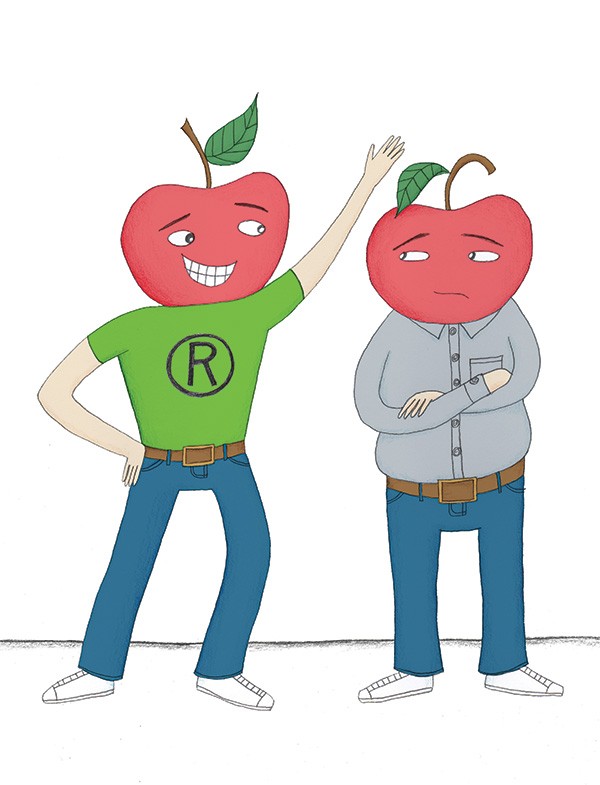They're as old as the Garden of Eden. In pie, they're all-American. Teacher-pleasers and doctor warder-offers, apples are a vision of whole-food health—you can even eat the wrapper. But come next Halloween, the fruit you might be bobbing for will be unlike any you've ever known. Apples have gone high-tech. The new Arctic® Apple (note the registered symbol) has been genetically engineered so that it doesn't turn brown when sliced. That's right—the world's first apple made with genetically modified organisms (GMOs) is coming to market soon, pending a few final hurdles toward USDA deregulation. Yet it's no surprise that en route toward its commercial debut, the laboratory-born fruit has sprouted a bit of controversy. Anti-GMO activists are upsetting the apple cart with corporate admonishments and consumer amber alerts. The Arctic® Apple's producers, a Canadian biotech company called Okanagan Specialty Fruits, says the apples are well tested and found perfectly safe to consume; without the "yuck factor" of browning, they might even inspire more healthful eating in our junk food nation. The marketing challenges, however, are fierce—just how eager will the public be to bite into the so-called Frankenapple?
Sci-fi metaphors aside, most of us are wary of GMO foods. We've heard about the superweeds that genetically modified crops have spawned, the restraints that patented seeds tend to put on farmers, and the corporate greed of GMO food megaproducers like Monsanto. Yet we do consume GMO foods, perhaps more frequently than we realize. According to the Center for Food Safety, more than 70 percent of the processed foods on supermarket shelves contain ingredients from genetically modified crops like corn, soy, and canola. That means you're getting a mouthful of GMOs every time you dig into your breakfast cereal, crackers, cookies, chips, even baby formula. The push right now among consumer groups is to get GMO foods labeled so people know what they're buying. The big question is: Are GMO foods safe to eat?
The Science Behind Science Food
Academic databases are glutted with studies about GMO products, both industry-sponsored experiments and independent trials. But rather than wade through hundreds of papers to draw conclusions, British environmentalist and author Mark Lynas—once one of the anti-GMO movement's most fervent activists, who just last year publically reversed his stance and softened his views after he "discovered science"—suggests a different way of diving in. "The most useful starting place, and I would suggest, the default position for any sensible layperson, is the statements produced by academic institutions assessing the overall evidence in this area," says Lynas. "For example, the American Association for the Advancement of Science states quite categorically that GMO crops are as safe as any other, as do the European Union science academies." Lynas warns against conspiracy theories and "anti-GMO denialism," saying that the consensus in the scientific community is that GMOs in our foods pose no known health risk. The 2012 Seralini rat study in France seemed to challenge this verdict when it found adverse health effects, including tumors, in rats fed a diet of Monsanto's Roundup Ready corn—but the experiments were later discredited and the study was retracted by the journal that published it, expunging it from the scientific record.
Of course, that's not the end of the story; with science, the case is never closed. Watchdog groups like the Organic Consumers Association (OCA) want GMO researchers to probe into areas that may be overlooked. "Our first concern is that the genetically engineered traits of these foods will actually survive in our bodies," says Alexis Baden-Mayer, the political director for OCA. "We've been told for years that they just get dissolved through digestion, which doesn't make sense because most of our food is incorporated into our body and is absorbed into our bloodstream." A 2011 study in Canada found traces of Bt—a genetically modified organism used in corn, potatoes, and other crops to ward off pests—in the blood of over 90 percent of women of reproductive age, as well as in 80 percent of fetal cord blood. "So we know that not only are these genetically engineered traits and proteins surviving digestion and accumulating in our bodies, but they're even being passed to our children before birth," says Baden-Mayer. "We don't know what effect this has, but they do leave a mark in our body."


















